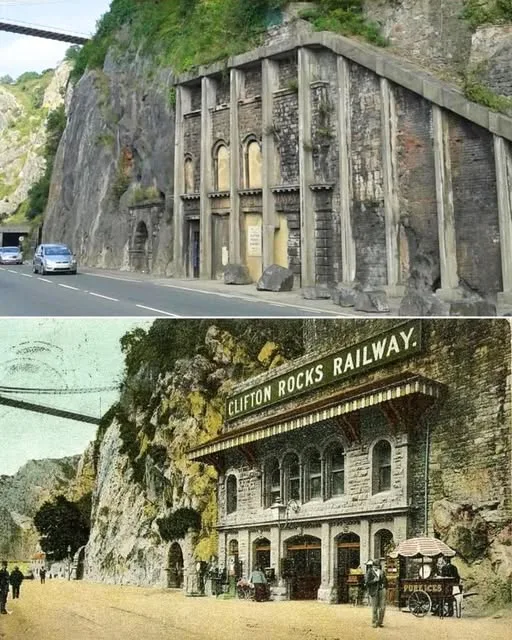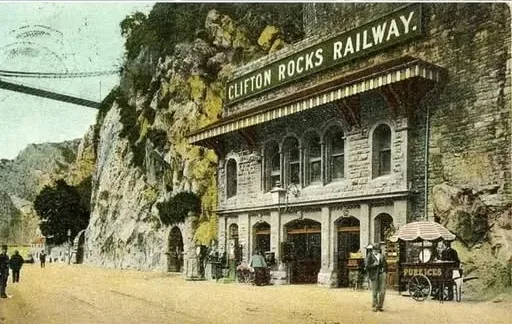In the late 19th century, funicular railways were the height of modern engineering, connecting difficult-to-reach places with speed and style. While some, like the famous Lynton & Lynmouth railway in Devon, became enduring icons, not all grand ideas were destined for success. In Bristol, the Clifton Rocks Railway was one such project—a marvel of Victorian ambition that, despite its ingenuity, was ultimately a magnificent failure.

A Vision of Victorian Ingenuity
The railway was designed to solve a significant geographical challenge: linking the prestigious, leafy streets of Clifton at the top of the Avon Gorge with the bustling docks and ferries of Hotwells below. It was a project born of pure ambition, funded by the same publisher behind the Lynton & Lynmouth railway, George Newnes, and designed by the same engineer, George Croydon Marks.
From the start, the railway was a daring feat. Construction began in 1891, with a team of workers carving a 28-foot-wide tunnel directly through the solid limestone cliffs of the gorge. The project was difficult and costly, taking two years to complete and running a staggering three times over its initial budget. The final result was an innovative, water-balance funicular system, where the weight of water in a tank on the descending car provided the power to pull the ascending car to the top.

From Sensation to Social Strife
When the railway opened on March 11, 1893, it was an immediate sensation, carrying a remarkable 6,220 passengers on its opening day alone. However, this initial success was short-lived, partly due to an unexpected social backlash. As the user mentioned, some local Clifton residents reportedly resented the easy access the railway gave to the working-class dockers from down below, leading to a steady decline in passenger numbers. By 1908, the company was declared bankrupt.
The railway’s fate was sealed by urban development. In 1922, the adjacent Hotwell Road was widened into the new Portway, leading to the demolition of the Hotwells railway station and tram stop—the very connections that fed passengers to the funicular. With its vital transport links gone, passenger numbers plummeted, and the railway ceased operations on September 29, 1934.
The Railway’s Secret Second Life
Even in its abandonment, the Clifton Rocks Railway’s story was not over. During World War II, its sturdy tunnels found a new, crucial purpose. The railway was converted into a massive air-raid shelter for local residents and, most notably, became a secret BBC relay station. These tunnels served as a secure hub for broadcasting should London’s studios be destroyed by enemy bombs.
Today, while the railway is no longer operational, its memory lives on. The entrances at both the top and bottom of the gorge are still visible, a silent reminder of Bristol’s past. A recent proposal aims to turn the upper section of the railway into a museum, celebrating its unique history—from a marvel of Victorian engineering and a social curiosity to a vital sanctuary in a time of war.


